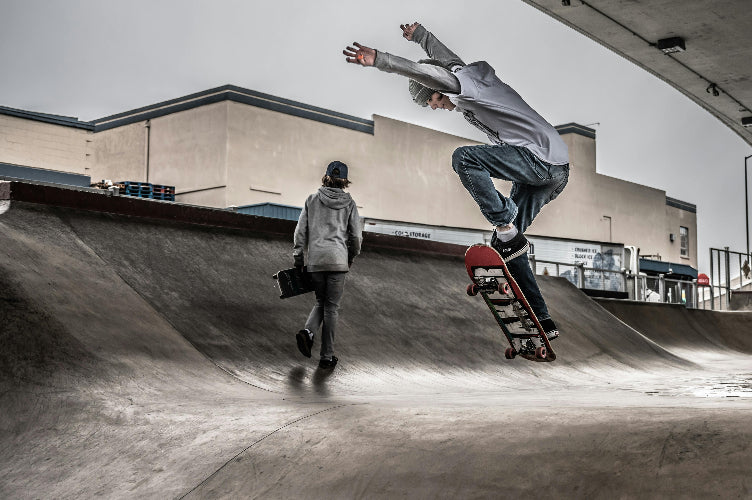In the early 2000s, skateboarding seemed to be losing its edge. Once a symbol of rebellion and underground culture, it was slowly fading from the mainstream spotlight. However, in recent years, there has been a remarkable resurgence in skateboarding's popularity, thanks in large part to the power of social media. Platforms like Instagram, TikTok, and YouTube have played a pivotal role in revitalizing this dynamic subculture, bringing it back into the limelight and capturing the imaginations of a new generation.

The relationship between skateboarding and social media is symbiotic, each fueling the other's growth and visibility. Here's how social media has reignited the passion for skateboarding and propelled it back into the cultural forefront:
-
Community Building: Social media has provided a virtual space for skateboarders from all corners of the globe to connect, share experiences, and support one another. Online communities centered around skateboarding have flourished, allowing enthusiasts to exchange tips, showcase their skills, and organize meetups. This sense of belonging and camaraderie has been instrumental in fostering a renewed interest in skateboarding among both seasoned riders and newcomers.

-
Accessible Learning Resources: Platforms like YouTube have democratized access to skateboarding tutorials and instructional videos. Beginners can now easily find step-by-step guides on mastering basic tricks, maintaining their boards, and navigating different terrain. This wealth of educational content has lowered the barrier to entry for aspiring skateboarders, making the sport more inclusive and welcoming to newcomers of all ages.

-
Inspiration and Creativity: Social media has become a breeding ground for creativity within the skateboarding community. Skaters regularly post clips of their latest tricks, edits of their skate sessions, and experimental maneuvers that push the boundaries of what's possible on a board. These visually captivating posts serve as a constant source of inspiration for fellow skaters and non-skaters alike, fueling a newfound appreciation for the artistry and athleticism of the sport.

-
Brand Promotion and Sponsorship: Skateboarding brands have leveraged social media as a powerful marketing tool to reach their target audience directly. By partnering with influential skaters and sponsoring viral content, brands have been able to increase their visibility and drive sales. Additionally, social media platforms have provided aspiring skaters with a platform to showcase their talent and attract sponsorships, further incentivizing participation in the sport.

-
Cultural Influence: Social media has amplified the cultural significance of skateboarding, portraying it as more than just a recreational activity but also a lifestyle and form of self-expression. Influencers and celebrities often feature skateboarding in their content, associating it with concepts of freedom, individuality, and nonconformity. As a result, skateboarding has transcended its niche status to become a mainstream symbol of youth culture and rebellion once again.

In conclusion, social media has played a pivotal role in revitalizing skateboarding and propelling it back into the cultural zeitgeist. By fostering community, providing access to learning resources, inspiring creativity, facilitating brand promotion, and influencing cultural perceptions, social media has transformed skateboarding from a fading subculture into a vibrant and influential movement. As we continue to embrace the digital age, the future of skateboarding looks brighter than ever, with social media serving as its driving force.

